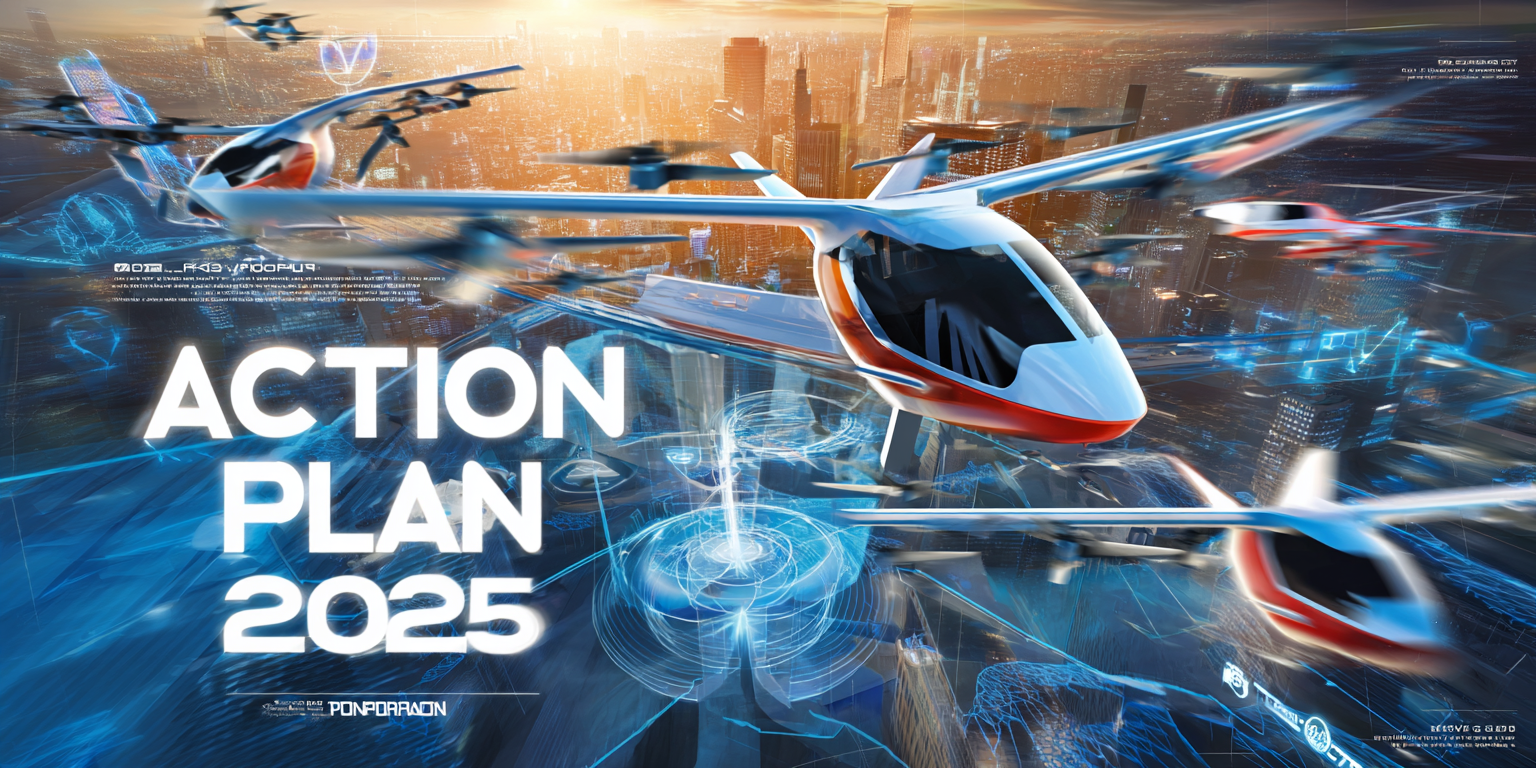By Bright Ibeawuchi, Low Altitude Economist
Control, not just innovation, is at the core of Archer Aviation’s $126 million Hawthorne deal, reshaping the future contours of air taxi deployment in Los Angeles and beyond. This analysis examines how vertiport scarcity creates competitive moats, why the 30-year master lease structure preserves capital flexibility, and what the LA28 Olympics showcase reveals about infrastructure positioning.
When Archer Aviation announced its $126 million acquisition of Hawthorne Airport in Los Angeles, Wall Street responded with skepticism. Investors questioned why a pre-revenue aircraft manufacturer struggling with quarterly losses approaching $130 million would tie up capital in airport facilities. The narrative made superficial sense: cash-burning startup buys real estate during an uncertain regulatory environment. Classic startup overreach.
But this analysis misses the forest for the trees. Archer’s Hawthorne move represents something far more consequential than a real estate play. It signals a fundamental shift in how advanced air mobility companies must think about competitive strategy, and it may have just reset the board for everyone else in the sector.
Infrastructure Scarcity Crisis
To understand why this move matters, you need to grasp a brutal constraint shaping the low-altitude economy: vertiports are scarce, and the gap between planned and actually-built facilities is catastrophic.
Global data from the February 2025 AAM Market Map is stark. While 1,504 vertiports are theoretically planned worldwide, realistic construction projections suggest only 980 will actually be built by 2029. More damning: in 2024, construction began on just 24 vertiports globally. China is the glaring exception, building momentum with 100+ sites planned for Guangdong Province alone by 2027, backed by government mandates. But in North America, the bottleneck is real.
You can certify an aircraft, but where will it operate? Third-party vertiport operators hold you hostage on pricing, scheduling priority, and customer experience. You’re at the mercy of municipal zoning boards and private facility owners with competing interests.
Archer just eliminated that risk for itself.
By The Numbers:
The February 2025 AAM Market Map reveals a stark mismatch between planned infrastructure and realistic deployment. While 1,504 vertiports are theoretically planned worldwide, realistic construction projections suggest only 980 will actually be built by 2029. The actual pace of vertiport construction lags far behind these projections. In 2024, construction began on just 24 vertiports globally, underscoring the gap between industry ambitions and on-the-ground execution.
China stands as the glaring exception to this Western bottleneck. Guangdong Province alone has committed to 100+ vertiport sites by 2027, backed by government mandates and coordinated regional planning. This infrastructure-first approach contrasts sharply with the fragmented Western model, where 1,504 planned sites face significant realization challenges and only 24 began construction last year.
For context on the LA28 Olympics air taxi operations, Archer will operate at a venue expecting approximately 15 million attendees. This scale of potential visibility amplifies the strategic value of Hawthorne's location and the infrastructure control Archer secured
Why Hawthorne Matters: Location as Strategy
The acquisition isn’t random. Hawthorne Airport sits within 3 miles of LAX, with proximity to SoFi Stadium, The Forum, Intuit Dome, and Downtown Los Angeles, essentially the vector points of any air taxi network serving Southern California’s high-value passenger flows. This isn’t just convenient geography; it’s network economics.
In hub-and-spoke air mobility systems, the hub operator dictates value capture. Archer can now control:
- Vertiport access and scheduling priority (critical scarcity in congested airspace)
- Customer experience and fare prices without negotiating revenue-sharing arrangements
- Technology integration for AI-powered traffic management and ground operations
- Partnerships with LAX, sports venues, and entertainment destinations
Competitors like Joby Aviation remain dependent on third-party vertiport partnerships, a structural disadvantage in a market where deployment sites are the bottleneck. Joby has Blade’s operational expertise, which is valuable. But Blade operates vertiports; it doesn’t own the airspace control node that becomes the economic center of gravity in mature markets.
AI Testbed Strategy
The most overlooked dimension of this acquisition is Archer’s positioning of Hawthorne as an AI innovation hub. The 80-acre facility, spanning 190,000 square feet, becomes a proving ground for autonomous air traffic management, AI-driven ground operations, and next-generation airspace integration technologies.
This matters because the monetization story extends far beyond selling electric vertical takeoff aircraft. Archer’s partnerships with United Airlines, Korean Air, and Japan Airlines aren’t primarily about transporting passengers. They’re about licensing AI aviation technology applicable to existing hub airport operations, where congestion optimization could deliver tens of millions in annual value per airport.
Think of it as Tesla’s approach to autonomous driving: the vehicle is the initial market entry, but the long-term value lies in the software and operational systems that can be monetized across entire fleets and geographies. Hawthorne becomes Archer’s real-world laboratory for these systems, generating proprietary data that competitors operating from leased vertiport pads cannot replicate.
Master Lease Structure Advantage
One detail that reframes the entire narrative: the $126 million is a 30-year master lease, not an outright purchase. The FBO (Fixed Base Operator) remains separate. This is actually far more sophisticated than it first appears.
At $4.2 million annually for operational control of an 80-acre facility with dedicated airspace access, Archer has preserved capital flexibility while securing guaranteed access for 3 decades. If urban air mobility adoption disappoints or regulatory delays extend beyond 2030, Archer has an exit pathway that freehold ownership wouldn’t provide. For a manufacturer burning over $100 million quarterly with no revenue yet, this capital preservation is tactically sound.
Compare this to China’s model, where EHang operates within government-funded networks backed by coordinated regional transport authorities. In fragmented Western markets lacking centralized AAM planning, private companies must vertically integrate to guarantee deployment locations. Archer’s lease structure balances this reality, control without maximum capital commitment.
LA28 Olympics Catalyst
The timing is calculated. Archer has secured the exclusive air taxi partnership for LA28 (2028), World Cup 2026, and Super Bowl LXI. These events provide an unparalleled global stage; 15 million expected Olympics attendees will witness eVTOL operations firsthand.
But the real economic value isn’t the Olympic flights themselves; it’s the network’s proof of concept. Successful operations moving athletes and VIPs between SoFi Stadium, LAX, Downtown LA, and Orange County venues will demonstrate:
- Operational reliability at scale under real-world constraints
- Integration with existing air traffic control systems near major hubs
- Public acceptance and demand elasticity
- Revenue from premium-priced transportation services
Competitors without similar geographic anchors and event platforms cannot generate this operational validation. Joby focused on San Francisco Bay Area partnerships, which are valuable but lack the global visibility and diverse venue connectivity that LA Olympics operations provide.
Competitive Implications
This move triggers urgency among competing eVTOL manufacturers and their capital providers. Facility access control is no longer a secondary consideration; it’s a primary competitive moat.
Pressure on Joby Aviation
Joby Aviation faces particular pressure. Despite a clear lead in certification progress and partnerships with United Airlines and Air Canada, without guaranteed operational sites, its path to profitability faces longer timelines and capital intensity than previously assumed. The company must evaluate acquisitions or exclusive long-term arrangements immediately, before vertiport scarcity drives valuations higher.
Lessons from Lilium’s Failure
Lilium, now defunct, failed to prioritize facility partnerships, relying instead on speculative vertiport operators with questionable development timelines. The lesson: aircraft technology alone is insufficient. You need control over the deployment environment.
Airport Stakeholder Response
For traditional aviation stakeholders, airports, FBOs, and regional carriers, this signals a fundamental industry reshuffling. Airports that have resisted AAM integration are now at a competitive disadvantage. Those that proactively retrofit for air taxi operations will capture disproportionate value as site scarcity drives premium pricing.
China’s Infrastructure-First Model
The contrast with China’s low-altitude economy is instructive. While Archer invests $126 million for one airport anchor, Guangdong Province has committed to 100+ vertiports by 2027 through coordinated government planning. EHang operates within this state-orchestrated ecosystem, having already achieved CAAC type certification and is conducting paying passenger operations in 2025.
The Chinese model distributes capital requirements across government entities while ensuring regulatory alignment, a luxury Western manufacturers don’t have. Archer’s investment reflects the reality that without centralized planning, private companies must vertically integrate.
Yet the Western approach, private capital efficiently targeting critical assets, may prove more economically sustainable in the long term than government-directed vertiport construction operating at utilization rates below commercial efficiency thresholds.
The Unresolved Risks
Archer’s strategy isn’t without substantial execution risks.
Regulatory Uncertainty: FAA certification timelines remain indefinite. If Midnight aircraft don’t achieve type certification until 2027 or later, Hawthorne generates zero operational revenue while incurring costs. Concurrent facility transformation and aircraft certification create dual execution risks.
Market Adoption: Western eVTOL demand remains unproven at commercial scale. Consumer willingness to pay premium prices for 15-20 minute flights remains theoretically modeled, not empirically validated. If initial demand proves tepid after certification, the investment becomes a cost rather than a competitive moat.
Capital Efficiency Scrutiny: At $129.9 million Q3 net loss with no revenue, investor tolerance for airport investment is finite. Additional delays or execution missteps could trigger capital market skepticism. This would constrain future financing flexibility.
Competitive Responses: If this strategy proves successful, expect rapid industry consolidation around facility ownership. Private equity and alternative asset managers will recognize vertiport scarcity and move aggressively, potentially outbidding manufacturers for prime locations.
Frequently Asked Questions
Why did Archer Aviation acquire Hawthorne Airport? Archer acquired operational control of Hawthorne Airport to secure guaranteed access in a market where vertiport scarcity represents the primary bottleneck to eVTOL deployment. The 30-year master lease provides control without maximum capital commitment.
How much did Archer pay for Hawthorne Airport? Archer structured a $126 million, 30-year master lease agreement, equating to $4.2 million annually for operational control of the 80-acre facility with dedicated airspace access.
What is the significance of the LA28 Olympics? Hawthorne's proximity to LAX, SoFi Stadium, and downtown Los Angeles positions Archer to showcase eVTOL operations to 15 million expected Olympics attendees, providing global visibility and network proof-of-concept validation.
How does this affect Joby Aviation and its competitors? Competitors without similar access control face structural disadvantages in constrained markets, relying on third-party vertiport partnerships that limit scheduling priority, pricing control, and customer experience.
Is this a real estate investment or a strategic acquisition? This is primarily an operational play, not real estate speculation. The master lease structure preserves capital flexibility while securing control, which is critical to network economics and AI technology development.
References:
Archer Aviation. “Archer To Acquire Los Angeles Airport As Strategic Air Taxi Network Hub and AI Testbed.” November 6, 2025.
Airport Industry News. “Archer Acquires Control of LA Hawthorne Airport.” November 6, 2025.
Seeking Alpha. “Archer Aviation stock dips after wider Q3 loss, Hawthorne airport deal.” November 7, 2025.
TipRanks. “Archer Aviation to acquire Hawthorne Airport for $126M.” November 6, 2025.
EHang. “EHang, CCIT, and CCCC-FHDI Expand Strategic Partnership.” May 19, 2025.
AAM Masterclass. “Archer Aviation’s Infrastructure Strategy Signals Wake-Up Call.” August 12, 2025.
Unmanned Airspace. “1504 vertiports now planned for construction worldwide.” February 23, 2022.
LA Times. “LA28 has a ‘new solution’ for Olympics traffic: electric air taxis.” May 14, 2025.
Markets Chronicle Journal. “Archer Aviation: Soaring Ambitions in Urban Air Mobility.” September 29, 2025.
Smart Cities Dive. “Archer Aviation named official air taxi of 2028 LA Olympics.” May 18, 2025.
LinkedIn. “Joby vs. Archer and the Countdown to eVTOL Reality.” October 13, 2025.




